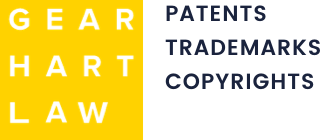R U a μ-N it E?
(Translation: Are you a micro-entity?)
First of all, apart from the sheer novelty of it, why would an entrepreneur or inventor want to be a micro-entity?
Every cloud has a silver lining. For the AIA “First Inventor to Invent” cloud due on Saturday, March 16th, that silver lining may be a 75% reduction in USPTO fees. To qualify for those reductions, the USPTO needs to consider you a “micro-entity” aka a “μ-entity”.
A μ-entity is a new class of applicants invented by the USPTO. It supplements their existing “Large Entity” and “Small Entity” classifications.
To be a μ-entity you first need to be a small entity – i.e. have fewer than 500 employees or be part of a US institute of higher education – and then pass three further tests, summarized as:

- Are you an employee of a US Institute of Higher Education?
- Have you been named as an inventor on 4 or more previously filed patent applications?
- Did you, as an individual, earn $150,000 or more in the year 2012?
If you can either answer “Yes” to question 1, or “No” to all three questions – congratulations! You are a μ-entity and eligible for a 75% reduction on USPTO fees. This reduction does not, unfortunately, apply to fees due to your patent practitioner.
You will, of course, need to sign a “Certification of entitlement to micro-entity status” to the effect that you understand the requirements to claim a μ-entity status, and that you do, in fact, meet them, subject to the usual penalty of being hung, drawn and quartered* if you willfully provide false information.
Before you sign such a document you may, therefore, want to acquaint yourself with the finer details of these definitions.
For instance, in Question 1, “Are you an employee of an Institute of Higher Education”, you qualify if one of the following two apply:
(1) Your employer, from which obtain the majority of your income, is a US institution of higher education (If you are unsure if your institute qualifies see Note A below); or
(2) You have assigned, granted, conveyed, or are under an obligation by contract or law, to assign, grant, or convey, a license or other ownership interest in the particular applications to such an institution of higher education.
Question 2 (in full): Have you been named as an inventor on 4 or more previously filed patent applications? Importantly, the following four do not count towards this total:
i. Applications filed in a country other than the US.
ii. Provisional applications.
iii. PCT applications for which the US national stage fee was not paid.
iv. Applications during prior employment in which you assigned, or were legally obligated to assign, your ownership in the patent to another.
Question 3 (in full): Did your gross income exceed three times the US median household income for the preceding calendar year? Unfortunately, the last year for which there are US Bureau of Census statistics is 2011 (released September 2012) when the US median household income was $50,054. So the figure you need to be under in 2013 is likely to be close to $150,162 – although the exact number won’t be available until much later in the year. One important point is that what counts is an applicant’s individual income, not their household income. Furthermore, in joint inventions, each inventor must qualify for μ-entity status.
If you have any questions or comments, please send them to:
info@patentpuzzle.com or call us at 908-273-0700.
————§§§————-
*I was kidding. Queen Anne did away with that in 1702, I think. Nowadays a willful false statement is punishable in the US under 18 U.S.C. 1001 by fine or imprisonment of not more than five (5) years, or both. Not quite as bad, but still to be avoided, if possible.
————§§§————-
Note A: An Institution of higher education for the purposes of determining micro-entity status is as defined in section 101(a) of the Higher Education Act of 1965 (20 U.S.C. 1001(a)), i.e. an institution that meets all of the following criteria:
It is an educational institution located in a State of the US that—
(1) admits as regular students only persons having a certificate of graduation from a school providing secondary education, or the recognized equivalent of such a certificate, or persons who meet the requirements of section 1091 (d) of this title;
(2) is legally authorized within such State to provide a program of education beyond secondary education;
(3) provides an educational program for which the institution awards a bachelor’s degree or provides not less than a 2-year program that is acceptable for full credit toward such a degree, or awards a degree that is acceptable for admission to a graduate or professional degree program, subject to review and approval by the Secretary;
(4) is a public or other nonprofit institution; and
(5) is accredited by a nationally recognized accrediting agency or association, or if not so accredited, is an institution that has been granted pre-accreditation status by such an agency or association that has been recognized by the Secretary for the granting of pre-accreditation status, and the Secretary has determined that there is satisfactory assurance that the institution will meet the accreditation standards of such an agency or association within a reasonable time.
————§§§————-

